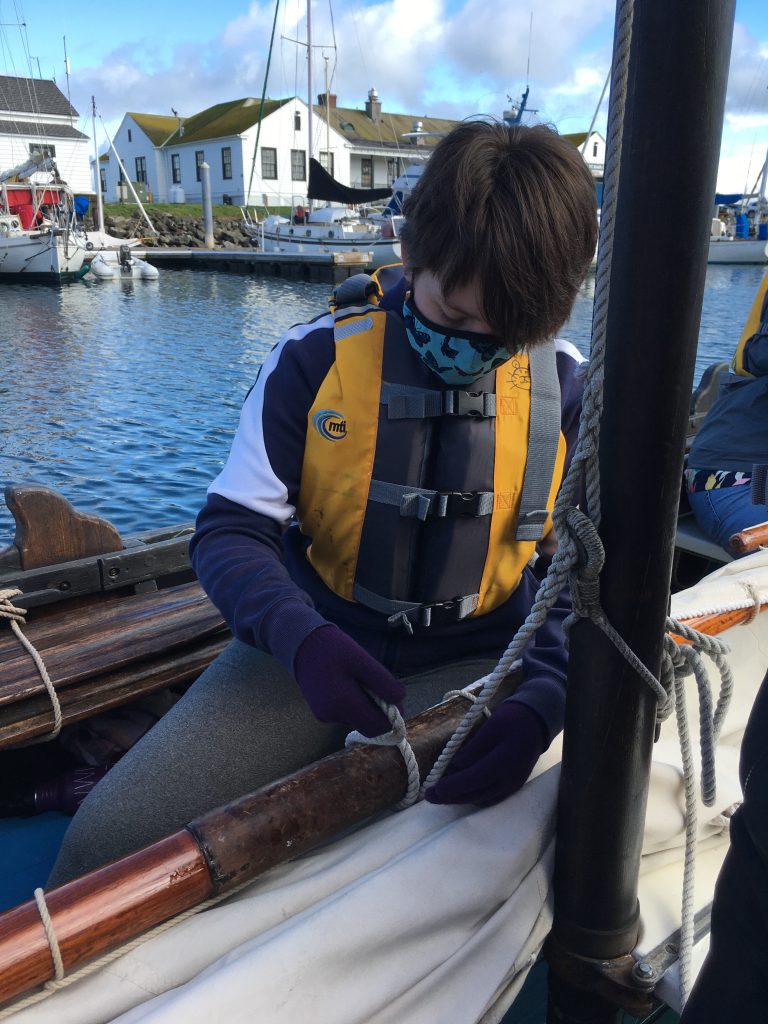By Chrissy McLean, Bravo Team Co-Captain
There is a saying that slow is smooth and smooth is fast. According to the internet, the saying originated with the Navy Seals. In any case, the idea is that in order to learn how to do something quickly you often have to slow down, take your time, and perfect the skills first.
After completing winter maintenance and launching the longboat Townshend, we have been sailing nearly every week. This winter has been an amazing one for longboat sailing. We’ve had many clear, sunny, and lightly windy days to work on our sailing skills.
Sailing a longboat is an all-hands affair. The dipping lug sails must be bent on to the yards, the bowline loop of the tackline has to be attached to the toggle, and the sheets must be worked and tensioned by hand (we don’t have winches on our boat and we don’t cleat off sheets for safety reasons).
And then there is tacking and jibing; on a longboat this is a pretty involved process. Once we are through the wind, the halyard is lowered a few feet, the tack line removed from the toggle, the luff pulled down and aft, and the forward end of the yard is “dipped” around the mast. At the same time, the halyard moves to the other side of the mast and the sheet is re-led. Finally, the tackline is re-attached to the toggle and the halyard is raised, cleated off and coiled. Phew!
Sailing a longboat once we have passed the sails is another set of skills. Since a longboat was primarily designed to go ashore, it has a very shallow draft. This means that it doesn’t sail well close to the wind and can “slip” downwind without a keel. The coxswain is constantly adjusting the tiller to accommodate gusts and shifts of wind as well as keeping the boat on course all while trying to see past the sails.
Each week, the sails go up a bit more quickly, the tacks and jibes are smoother, and the knots and hitches come more easily. We’re still in the slow phase, working on smooth, and looking forward to fast.














